
Succulent Health: Healthy vs Unhealthy - Spot the Difference

Whether you have a green thumb or not, you've probably come across the trend of succulents. These cute little plants with their thick, fleshy leaves have become a popular choice for home decor and gardening enthusiasts. Succulents are known for their ability to store water in their leaves, making them low-maintenance and drought-tolerant. However, just like any living thing, succulents can also face health issues if not properly cared for.
We will explore the topic of succulent health and learn how to spot the difference between healthy and unhealthy succulents. We will discuss the common signs of a healthy succulent, such as vibrant and firm leaves, as well as the warning signs of an unhealthy succulent, such as yellowing or mushy leaves. Additionally, we will delve into the causes of succulent health problems, such as overwatering or inadequate sunlight, and provide tips on how to prevent and treat these issues. By the end of this article, you'll be equipped with the knowledge to keep your succulents thriving and looking their best!
- Healthy succulents have vibrant and plump leaves
- Unhealthy succulents have wilted or shriveled leaves
- Healthy succulents have a balanced watering schedule
- Unhealthy succulents may be overwatered or underwatered
- Healthy succulents receive adequate sunlight
- Unhealthy succulents may have sunburned or etiolated growth
- Healthy succulents have well-draining soil
- Unhealthy succulents may have root rot or be planted in unsuitable soil
- Healthy succulents are free from pests
- Unhealthy succulents may have signs of infestation or damage from pests
- Healthy succulents are actively growing and producing new leaves
- Unhealthy succulents may show stunted growth or lack of new growth
- Frequently Asked Questions
Healthy succulents have vibrant and plump leaves
When it comes to succulents, the health of their leaves is a key indicator of their overall well-being. Healthy succulents have leaves that are vibrant and plump, indicating that they are receiving the proper amount of hydration and nutrients.
One way to spot a healthy succulent is by examining the color of its leaves. A healthy succulent will have leaves that are rich in color, whether it be a vibrant green, various shades of red or purple, or even a combination of colors. These vibrant hues are a sign that the succulent is receiving enough sunlight and is able to carry out photosynthesis effectively.
In addition to the color, healthy succulents will also have leaves that appear plump and firm. When you gently press on the leaves of a healthy succulent, they should feel taut and full of water. This is because succulents have adapted to survive in arid conditions by storing water in their leaves, stems, or roots. The plumpness of their leaves indicates that they have ample water reserves to sustain themselves.
On the other hand, unhealthy succulents may exhibit signs of stress or poor health. Their leaves might be pale or yellowish, indicating a lack of chlorophyll and possibly a nutrient deficiency. These succulents may also have leaves that appear shriveled or wrinkled, suggesting dehydration or a lack of water.
 Understanding the Factors Behind Brown Stem in Succulents
Understanding the Factors Behind Brown Stem in SucculentsIt's important to note that while succulents are known for their ability to withstand drought-like conditions, they still require proper care and attention to thrive. Overwatering can be just as harmful to succulents as underwatering. Therefore, finding the right balance in watering frequency is crucial for maintaining the health of your succulents.
To summarize, healthy succulents have vibrant and plump leaves, indicating that they are well-hydrated and receiving adequate sunlight. On the other hand, unhealthy succulents may display pale, yellowish, shriveled, or wrinkled leaves, suggesting stress or poor health. By understanding these differences, you can ensure that your succulents thrive and bring beauty to your living space.
Unhealthy succulents have wilted or shriveled leaves
When it comes to succulent health, one of the key indicators of an unhealthy succulent is wilted or shriveled leaves. These plants usually have a dehydrated appearance, with the leaves appearing limp and lacking vitality.
Wilted or shriveled leaves can be caused by various factors, including overwatering, underwatering, or prolonged exposure to direct sunlight without adequate hydration. It is essential to understand the specific needs of your succulent species to avoid such issues.
Overwatering is a common mistake that can lead to the wilting of succulent leaves. These plants have adapted to survive in arid conditions and store water in their leaves and stems. When they receive excessive moisture, the roots may become waterlogged, leading to root rot and ultimately causing the leaves to wilt.
On the other hand, underwatering can also result in wilted succulent leaves. When succulents do not receive enough water, they are unable to store adequate moisture within their tissues, causing the leaves to shrivel and lose their plumpness. It is crucial to strike a balance between watering and allowing the soil to dry out between watering sessions.
Additionally, prolonged exposure to direct sunlight without sufficient hydration can also cause succulent leaves to wilt. While these plants require plenty of sunlight to thrive, intense and prolonged sun exposure can cause them to lose moisture at a faster rate than they can absorb, leading to wilting.
 Troubleshooting: Is My Succulent Dying from the Bottom Up?
Troubleshooting: Is My Succulent Dying from the Bottom Up?To ensure the health of your succulents, it is important to monitor their watering needs, provide adequate sunlight, and ensure proper drainage. By doing so, you can help prevent the wilting or shriveling of leaves, keeping your succulents happy and thriving.
Healthy succulents have a balanced watering schedule
One of the key factors in determining the health of a succulent is its watering schedule. Healthy succulents have a balanced watering routine that allows their roots to absorb just the right amount of water.
When it comes to watering succulents, it's important to strike a balance. Overwatering can lead to root rot and other fungal diseases, while underwatering can cause the succulent to become dehydrated and wilted.
A healthy watering schedule for succulents typically involves watering them thoroughly, allowing the water to drain out completely, and then waiting for the soil to dry out before watering again. This ensures that the roots have enough time to absorb water and prevents the risk of overwatering.
On the other hand, unhealthy succulents may show signs of overwatering or underwatering. Overwatered succulents may have mushy, discolored leaves and a pungent smell. Underwatered succulents, on the other hand, may have shriveled leaves and appear wilted.
If you notice any of these signs in your succulent, it's important to adjust your watering routine accordingly. Give your succulent some time to recover by allowing the soil to dry out completely before watering again.
Remember, a balanced watering schedule is crucial for maintaining the health of your succulents and ensuring their longevity.
 The Common Reasons Succulents Die Easily: Understanding the Challenges
The Common Reasons Succulents Die Easily: Understanding the ChallengesUnhealthy succulents may be overwatered or underwatered
Unhealthy succulents may be overwatered or underwatered. Both of these conditions can have detrimental effects on the health of your succulents. It is important to understand the signs of overwatering and underwatering to ensure that you are providing the proper care for your plants.
Overwatering:
Overwatering is one of the most common mistakes made when caring for succulents. Succulents have adapted to survive in arid conditions and store water in their leaves and stems. When they receive too much water, their roots become waterlogged, leading to a variety of issues.
- Yellowing or translucent leaves: Overwatered succulents may develop yellow or translucent leaves. This is a sign that the plant is retaining too much water, causing the leaves to become waterlogged and unable to properly photosynthesize.
- Soft and mushy leaves: Excess water can cause the leaves of succulents to become soft and mushy. They may lose their firmness and start to rot, which can ultimately lead to the death of the plant.
- Root rot: Overwatering can create a damp environment that promotes the growth of harmful fungi and bacteria. This can result in root rot, which is characterized by a foul odor and black, mushy roots.
- Wilting: Surprisingly, overwatered succulents can also exhibit signs of wilting. This is because their roots are unable to absorb oxygen properly when they are constantly surrounded by water.
Underwatering:
On the other hand, underwatering succulents can also have negative consequences on their health. It is crucial to strike a balance and provide enough water to keep your succulents thriving.
- Shriveled leaves: When succulents do not receive enough water, their leaves can become wrinkled and shriveled. This is a visible sign that the plant is dehydrated and in need of water.
- Drooping or wilting: Underwatered succulents may display signs of drooping or wilting. They may appear limp and lack the usual plumpness that healthy succulents possess.
- Dormancy or stunted growth: Succulents that are consistently underwatered may enter a state of dormancy or experience stunted growth. They conserve energy and limit their growth in order to survive the lack of water.
- Brown or crispy leaves: Severely underwatered succulents may have brown or crispy leaves. This is a sign that the plant is extremely dehydrated and struggling to survive.
By being aware of the signs of overwatering and underwatering, you can take the necessary steps to maintain the health of your succulents. Remember, finding the right balance with watering is key to keeping your succulents thriving.
Healthy succulents receive adequate sunlight
Healthy succulents need adequate sunlight to thrive. They are sun-loving plants that require at least 4-6 hours of direct sunlight per day. Sunlight provides them with the energy they need for photosynthesis, which is crucial for their growth and overall health.
When you observe a healthy succulent, you will notice that it has vibrant and firm leaves. The leaves may have a slight reddish or purplish tint, indicating that they are receiving the right amount of sunlight. In contrast, unhealthy succulents that lack sunlight may have pale, yellowish, or stretched-out leaves.
 Could Succulents Be Vulnerable to Fungal Infections?
Could Succulents Be Vulnerable to Fungal Infections?It's important to note that while succulents love sunlight, they can also get sunburned if exposed to intense or prolonged periods of direct sunlight. To prevent this, it's recommended to gradually introduce them to brighter light conditions and provide some shade during the hottest parts of the day.
Overall, ensuring that your succulents receive adequate sunlight is crucial for their health and well-being. So, make sure to place them in a spot where they can soak up the sun and thrive.
Unhealthy succulents may have sunburned or etiolated growth
Succulents are known for their ability to thrive in harsh conditions, but even these resilient plants can suffer from health issues. One common sign of an unhealthy succulent is sunburned or etiolated growth. This occurs when a succulent is exposed to too much direct sunlight or lacks sufficient light, causing it to stretch and become weak.
Sunburned Growth:
When a succulent gets sunburned, its leaves may turn brown, yellow, or even white. The affected areas may appear dried out and crispy. This damage is irreversible, and the burned leaves will not recover. To prevent sunburn, it is crucial to provide your succulent with the right amount of sunlight. Gradually introduce them to direct sunlight or provide them with partial shade during the hottest parts of the day.
Etiolated Growth:
 Can Succulents Survive Fire? Fire Safety for Hardy Plants
Can Succulents Survive Fire? Fire Safety for Hardy PlantsEtiolation is a condition that occurs when a succulent doesn't receive enough light. In an attempt to reach for more light, the succulent will start to stretch out and become elongated. The stem becomes thin and weak, and the leaves may appear spaced out or smaller than usual. Etiolation can also cause the plant to lose its vibrant colors and become pale or faded.
How to spot the difference:
- Unhealthy succulents with sunburned growth will have visibly burned and crispy leaves.
- Unhealthy succulents with etiolated growth will have elongated stems and spaced-out leaves.
If you notice any of these signs in your succulent, it's essential to take action to improve its health. Providing the right amount of light and gradually acclimating it to direct sunlight can help prevent sunburned or etiolated growth. Additionally, ensuring that your succulent is planted in well-draining soil and watering it correctly can contribute to its overall health and vitality.
Remember, a healthy succulent will have compact growth and vibrant colors. By understanding the difference between healthy and unhealthy growth, you can ensure that your succulents thrive and add beauty to your indoor or outdoor space.
Healthy succulents have well-draining soil
Healthy succulents have well-draining soil that allows excess water to escape quickly, preventing root rot. When planting succulents, it is essential to use a well-draining soil mix that is specifically formulated for these types of plants.
This type of soil typically contains a combination of materials such as sand, perlite, and pumice, which promotes proper drainage. Avoid using regular potting soil, as it tends to retain too much moisture, leading to soggy soil that can harm succulent roots.
 Identifying Root Rot in Succulents: Yellow Leaves and Soft Stems
Identifying Root Rot in Succulents: Yellow Leaves and Soft StemsEnsuring that your succulents have the right soil is crucial for their overall health and longevity. It allows the roots to receive the necessary nutrients while preventing waterlogging, which can lead to root decay and plant death.
Unhealthy succulents may have root rot or be planted in unsuitable soil
Succulents are known for their ability to thrive in harsh conditions, but even these hardy plants can suffer from health issues. One common problem that unhealthy succulents may face is root rot. Root rot occurs when the roots of the plant become waterlogged for an extended period, leading to the growth of harmful fungi and bacteria. This can ultimately cause the roots to decay and the plant to suffer.
Another factor that can contribute to the unhealthiness of succulents is planting them in unsuitable soil. Succulents require well-draining soil that allows excess water to flow through easily. If they are planted in soil that retains too much moisture, it can lead to root rot and other problems.
So, how can you spot the difference between healthy and unhealthy succulents? Here are some signs to look out for:
Yellowing or wilting leaves
- If you notice that the leaves of your succulent are turning yellow or wilting, it may be a sign of an unhealthy plant. This could indicate overwatering or root rot.
Soggy or mushy roots
- When checking the roots of your succulent, if you find that they are soggy or mushy to the touch, it is a clear sign of root rot. Healthy roots should be firm and white or light-colored.
Foul odor
- If your succulent emits a foul odor, it could be an indication of bacterial or fungal growth caused by root rot. Healthy succulents should not have any strong smells.
Note: It is essential to address these issues promptly to prevent further damage to your succulent. If you suspect root rot or other health problems, consider repotting your succulent in well-draining soil and adjusting your watering routine.
Healthy succulents are free from pests
 Causes of White Spots on Succulent Leaves: A Comprehensive Guide
Causes of White Spots on Succulent Leaves: A Comprehensive GuideOne of the key indicators of a healthy succulent is the absence of pests. Pests can wreak havoc on the overall health and appearance of your plants, so it's important to keep an eye out for any signs of infestation.
Healthy succulents will typically have smooth and blemish-free leaves, indicating that they are not being attacked by any insects or pests. On the other hand, unhealthy succulents may show signs of pest damage such as chewed leaves, holes, or sticky residue left behind by pests.
To ensure the health of your succulents, it's essential to regularly inspect them for any signs of pests. Look closely at the leaves, stems, and soil surface for any visible insects or eggs. Common pests that can affect succulents include mealybugs, aphids, spider mites, and scale insects.
If you spot any pests on your succulents, it's crucial to take immediate action to prevent further damage. Depending on the severity of the infestation, you can try various methods to eliminate the pests. These may include using natural remedies like neem oil or insecticidal soap, physically removing the pests, or introducing beneficial insects that feed on the pests.
Remember: Prevention is always better than cure when it comes to pest control. Keep your succulents healthy by providing them with proper care, including adequate sunlight, well-draining soil, and regular watering. This will help strengthen their natural defense mechanisms and make them less susceptible to pests.
Unhealthy succulents may have signs of infestation or damage from pests
Unhealthy succulents may exhibit several signs of infestation or damage caused by pests. It is crucial to be able to spot these signs early on to prevent further harm to your plants. Here are some indicators to look out for:
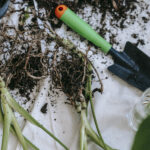 Why Your Succulent Died Overnight and How to Prevent It
Why Your Succulent Died Overnight and How to Prevent It- Yellowing or discolored leaves: If you notice that the leaves of your succulent are turning yellow or have unusual discoloration, it may be a sign of pest infestation. Pests like aphids or spider mites can suck the sap out of the leaves, causing them to lose color.
- Wilting or drooping: Unhealthy succulents may also start to wilt or droop. This can be a result of pests damaging the roots or stems of the plant, hindering its ability to absorb water and nutrients properly.
- Visible pests: Take a close look at your succulent's leaves and stems. If you notice tiny insects, webs, or sticky residue, these are clear indicators of pest presence. Common pests that attack succulents include mealybugs, scale insects, and thrips.
- Chewed or distorted leaves: Some pests, like caterpillars or snails, may leave behind visible signs of their feeding activity. If you notice chewed or distorted leaves, it is a clear indication of pest damage.
- Stunted growth or lack of new growth: Unhealthy succulents may struggle to grow or show a lack of new growth. Pests can hinder the plant's ability to photosynthesize and absorb nutrients, leading to stunted or no growth.
If you observe any of these signs in your succulents, it is essential to take immediate action to address the pest infestation. You can try using natural pest control methods or consult with a professional if the infestation is severe.
Healthy succulents are actively growing and producing new leaves
One of the key indicators of a healthy succulent is its ability to actively grow and produce new leaves. A healthy succulent will have vibrant and plump leaves that are firm to the touch. These leaves will often have a glossy or waxy appearance, indicating that the plant is retaining moisture effectively. Additionally, healthy succulents will display steady and consistent growth, with new leaves sprouting from the center of the rosette or along the stem.
It is important to note that different succulent varieties have different growth patterns. Some succulents, like Echeverias, grow in a rosette shape and produce new leaves from the center. Others, like Sedums, grow in a more compact manner and produce new leaves along the stem. Regardless of the growth pattern, a healthy succulent will demonstrate visible signs of growth and new leaf production.
If you notice that your succulent is not producing new leaves or the existing leaves are shriveled, wrinkled, or discolored, it may be an indication of an unhealthy plant. This could be due to various factors such as improper watering, inadequate sunlight, or pest infestation.
To ensure the health of your succulent, it is essential to provide it with the proper care and environment. This includes providing adequate sunlight, well-draining soil, and a watering routine that allows the soil to dry out between waterings. Regularly inspect your succulent for any signs of pests or diseases and take appropriate measures to address them.
Healthy succulents are characterized by their active growth and the production of new leaves. By understanding the signs of a healthy succulent, you can better care for your plants and ensure their longevity.
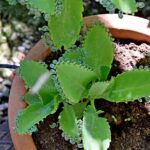 Are Mother of Thousands Succulents Toxic to Pets?
Are Mother of Thousands Succulents Toxic to Pets?Unhealthy succulents may show stunted growth or lack of new growth
Unhealthy succulents may show stunted growth or lack of new growth. This can be observed when the succulents appear smaller in size compared to healthy ones of the same species. Additionally, unhealthy succulents may not produce any new leaves or shoots, indicating a lack of vitality.
Frequently Asked Questions
1. How can I tell if my succulent is healthy or unhealthy?
Healthy succulents have plump, firm leaves and a vibrant color. Unhealthy succulents may have shriveled or discolored leaves, and show signs of rot or pests.
2. What are some common signs of an unhealthy succulent?
Common signs of an unhealthy succulent include yellowing or browning leaves, soft or mushy texture, wilting, and a lack of new growth.
3. How can I promote the health of my succulent?
 Identifying Root Rot: Spotting Unhealthy and Healthy Roots
Identifying Root Rot: Spotting Unhealthy and Healthy RootsTo promote succulent health, provide adequate sunlight (at least 6 hours a day), water sparingly (allow soil to dry out completely between watering), and use well-draining soil. Avoid overwatering and protect from extreme temperatures.
4. What should I do if my succulent is showing signs of poor health?
If your succulent is showing signs of poor health, assess its light and water conditions. Adjust accordingly and consider repotting if the soil is retaining too much moisture. Remove any rotted or infected parts and treat for pests if necessary.
If you want to read more articles similar to Succulent Health: Healthy vs Unhealthy - Spot the Difference, you can visit the Pests and Diseases category.

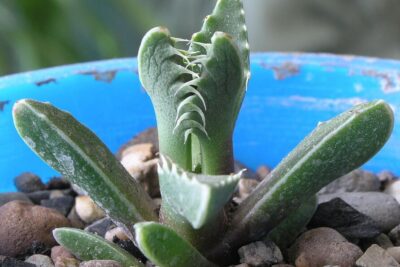

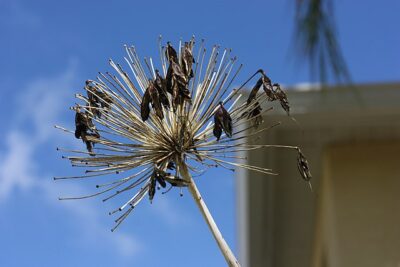

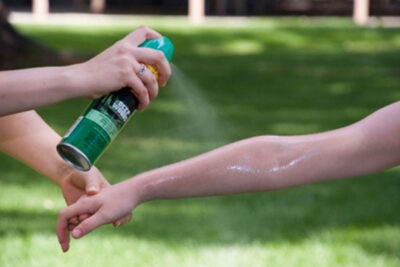
You Must Read